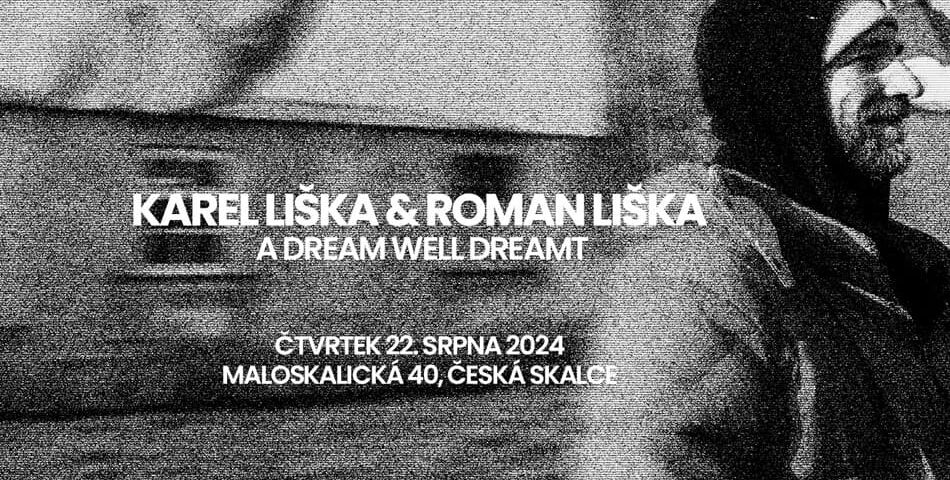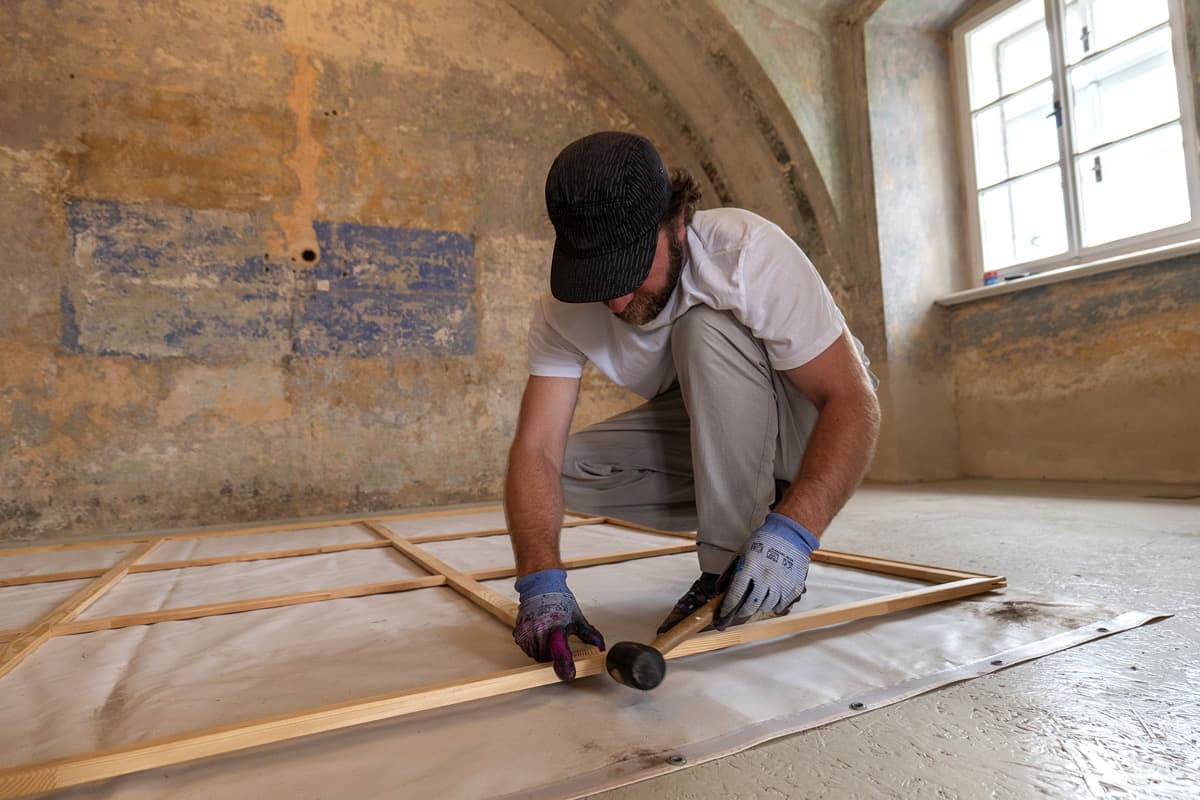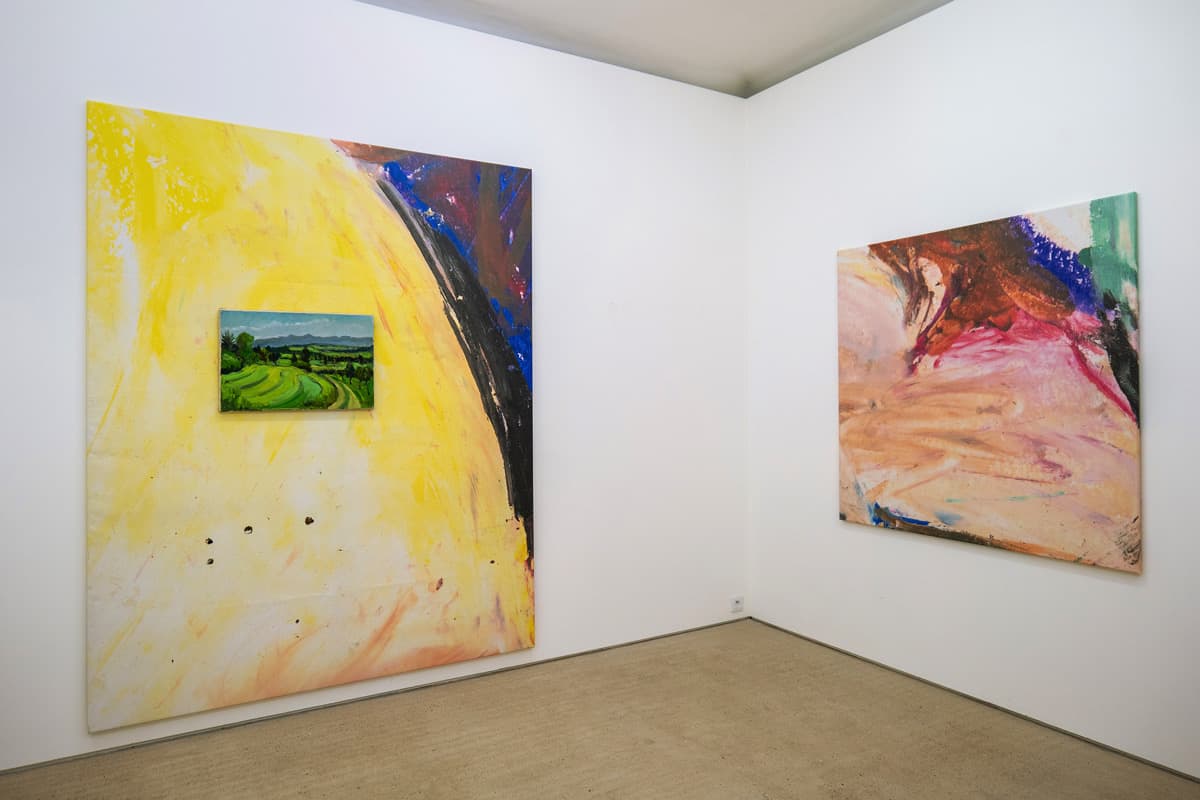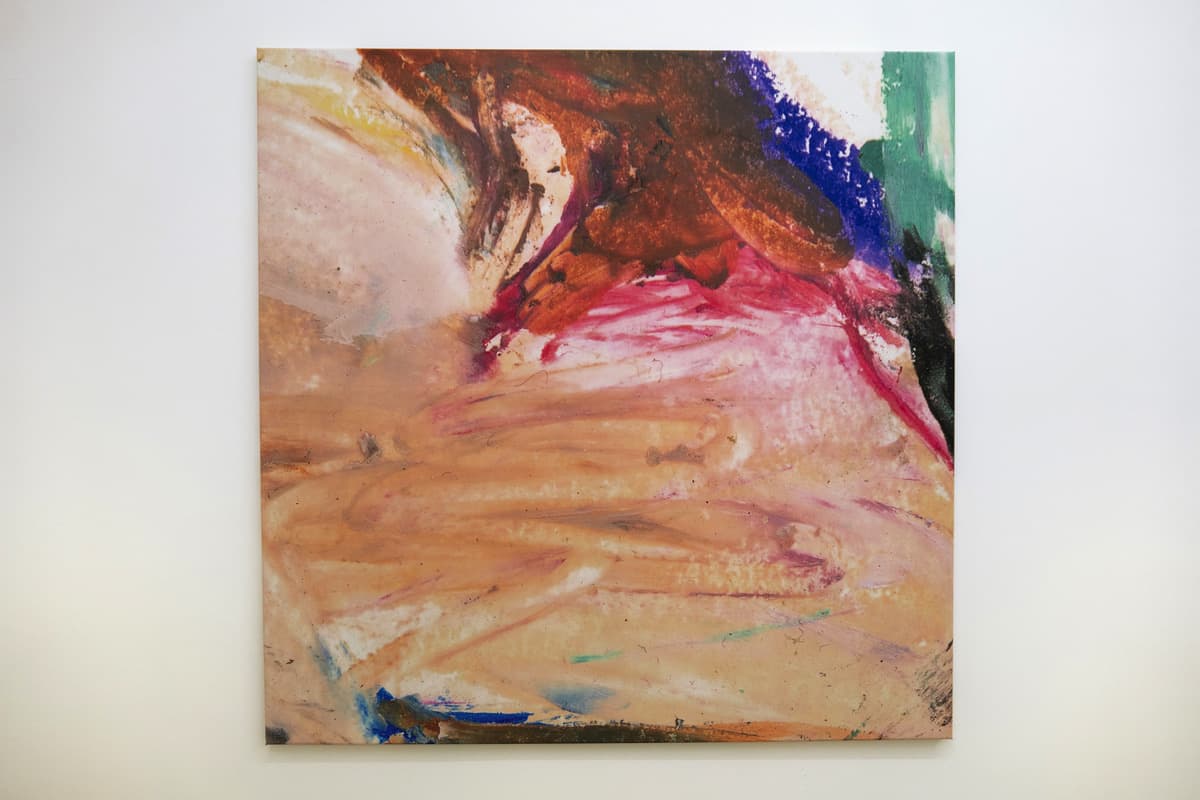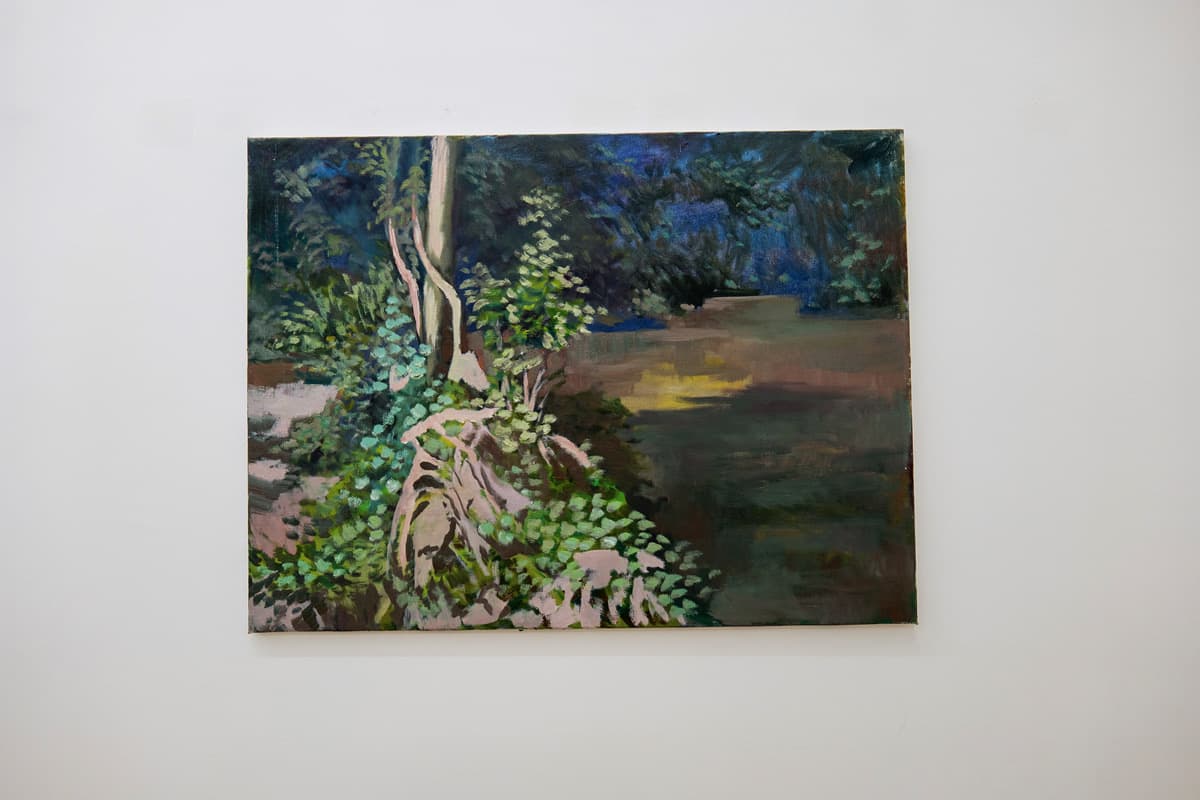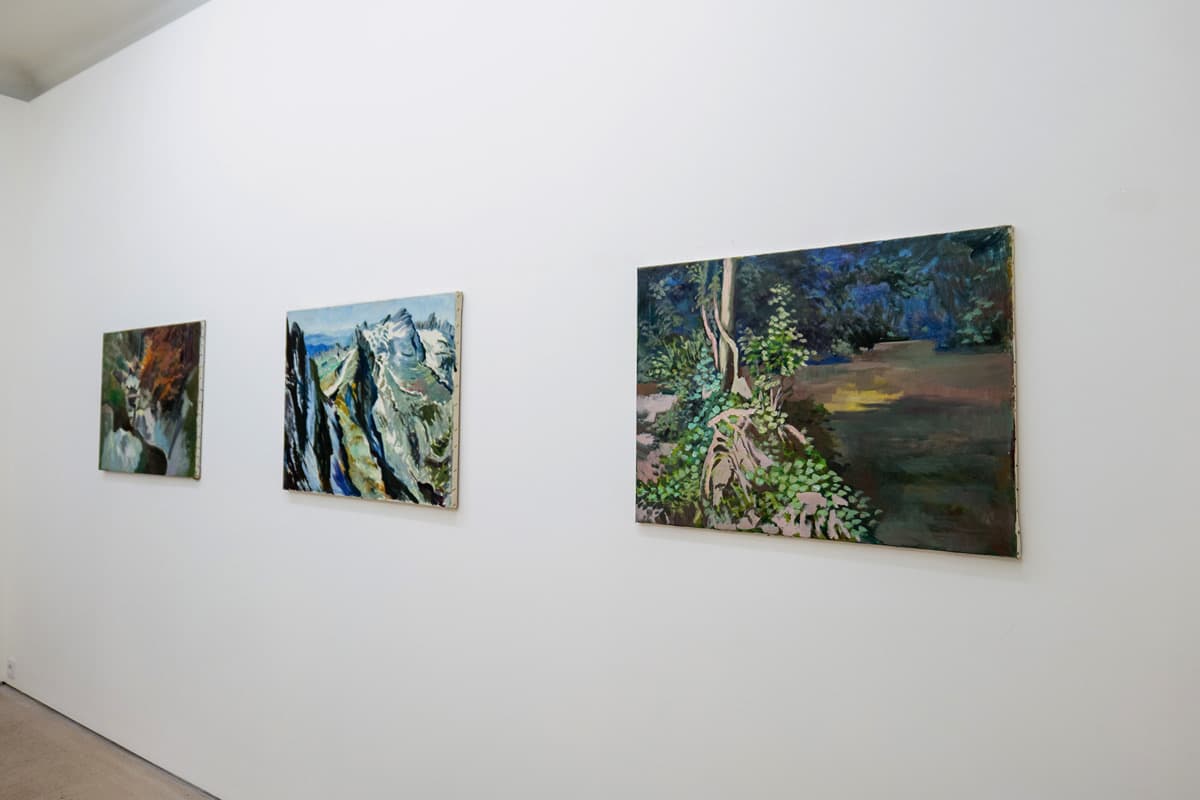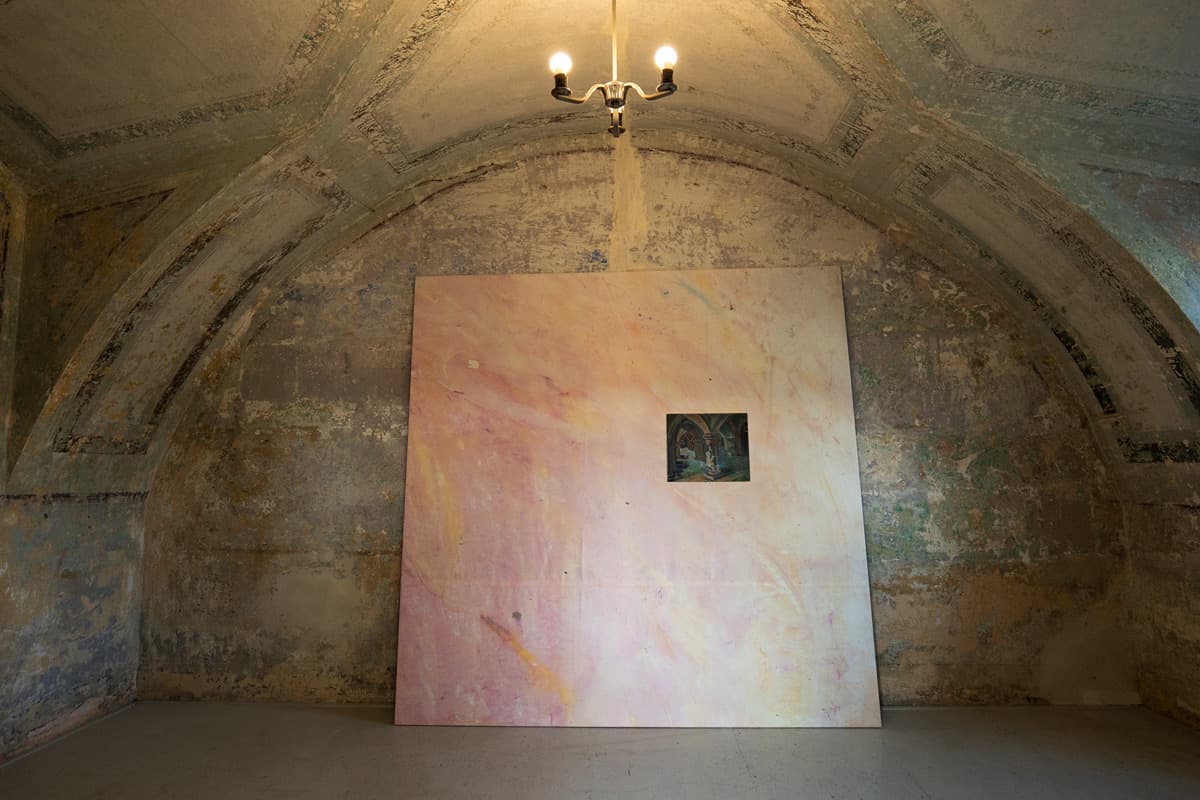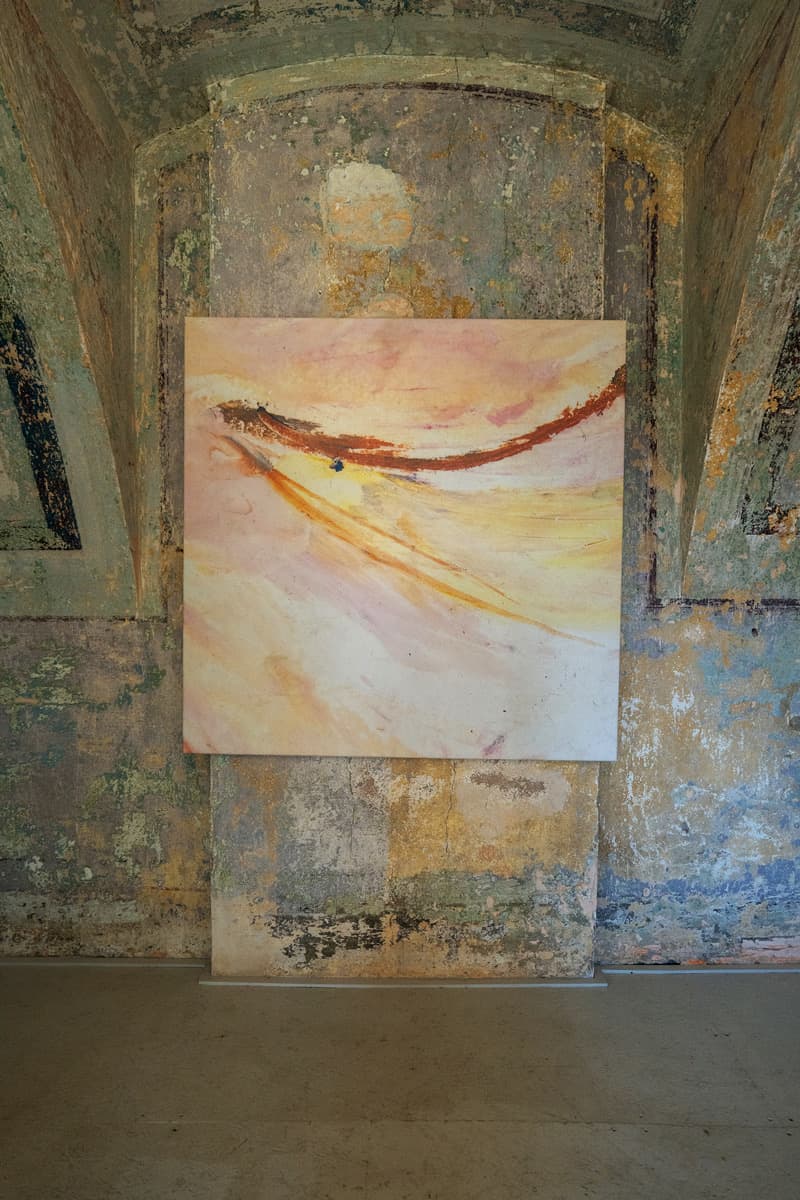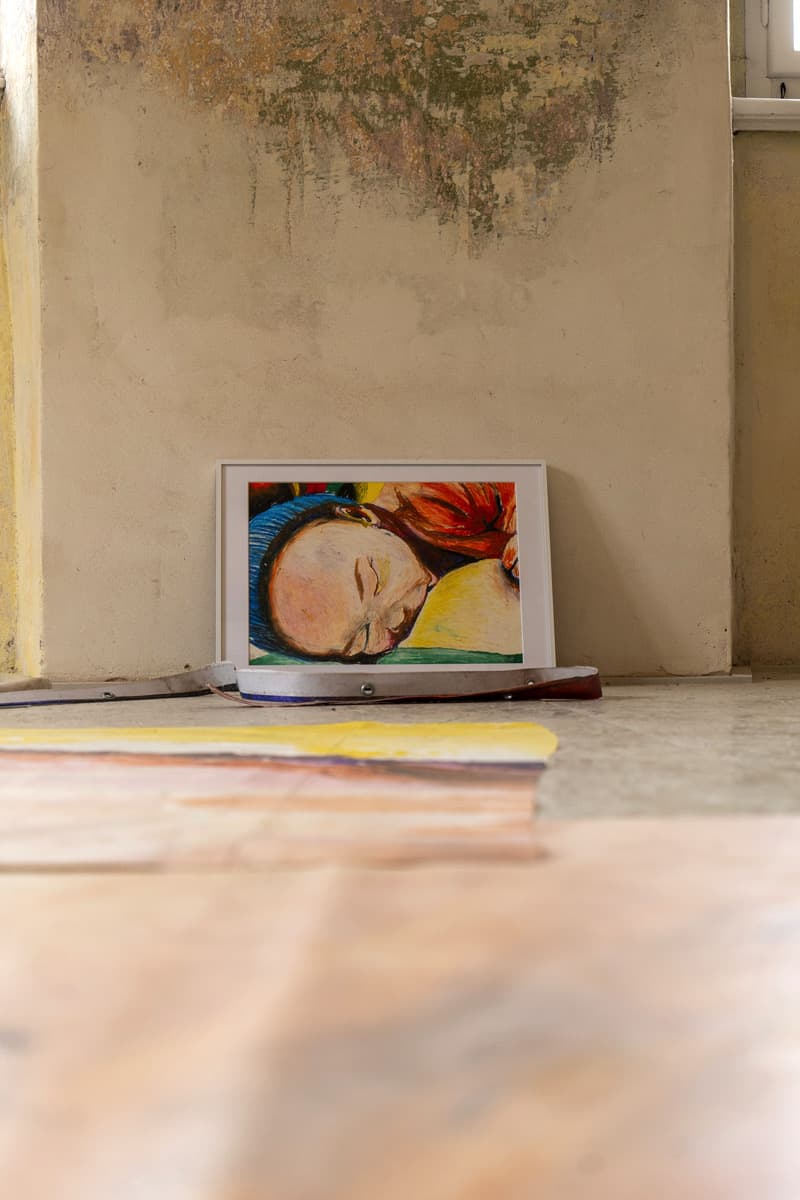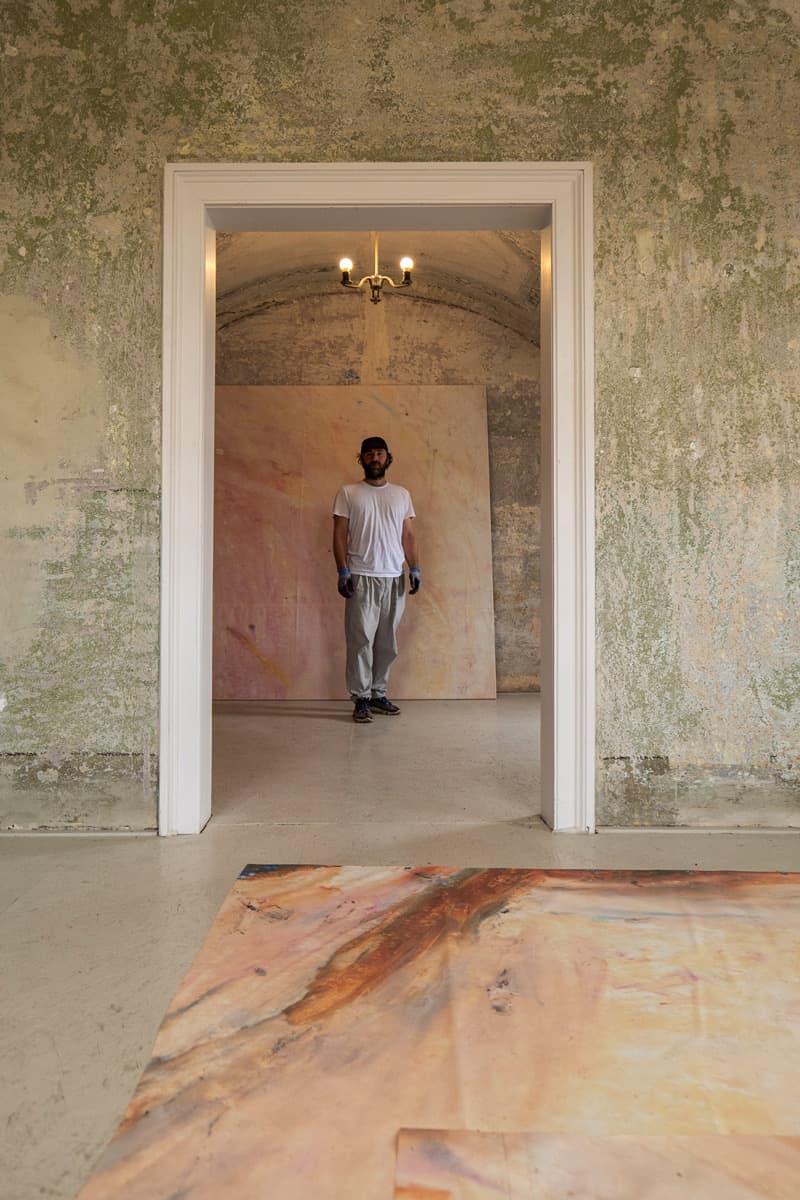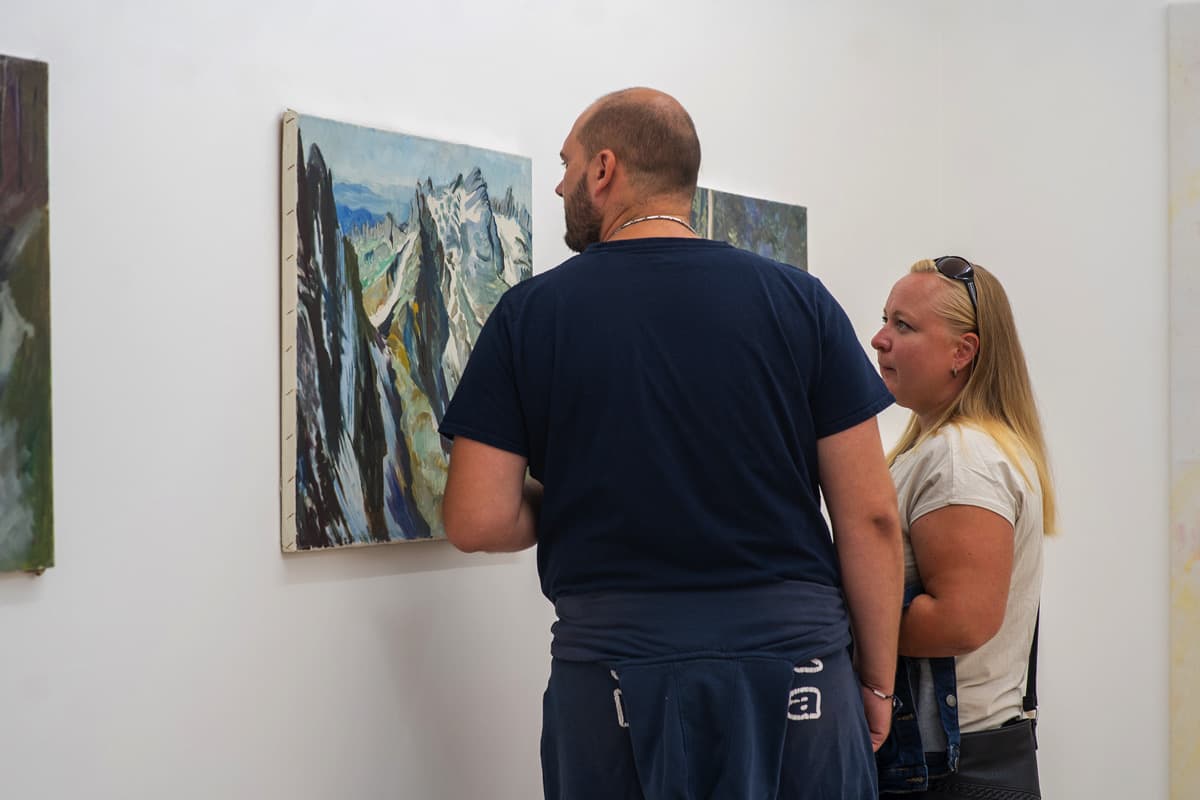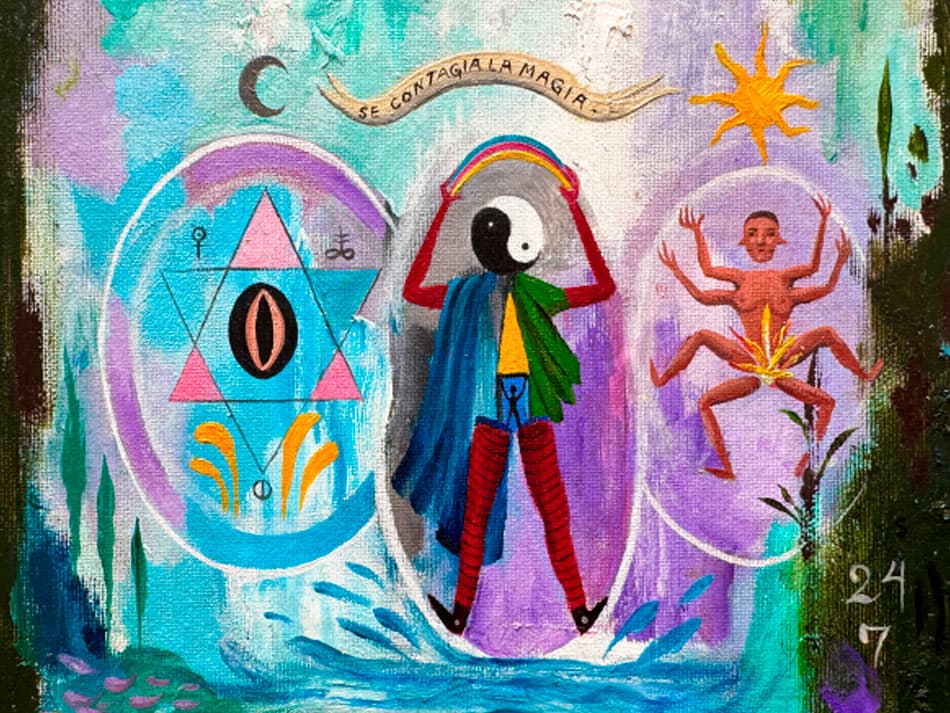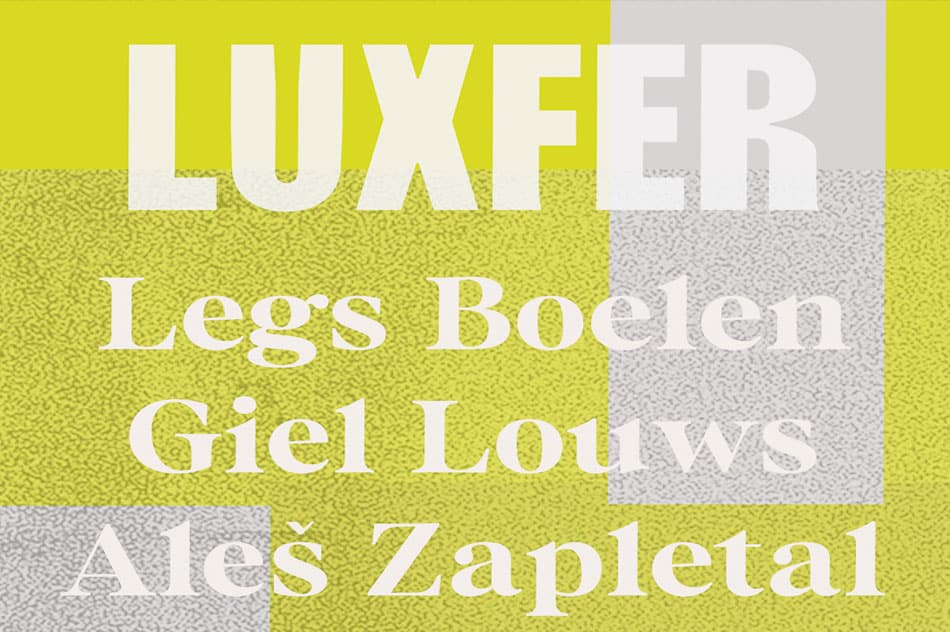
Karel Liška & Roman Liška
19. 8. 2024
MALBA 2.0
20. 10. 2024Ahoj Romane, rád bych tě požádal o krátké představení. Kdo jsi? Kde žiješ a odkud jsi?
Jmenuji se Roman Liška, jsem umělec žijící v Berlíně, kde mám svůj ateliér. Kromě toho vyučuji na Bauhauské univerzitě ve Weimarnu na katedře výtvarného umění.
Tvoje díla byla vystavována po celém světě, včetně prestižních institucí, jako je londýnský Institut současného umění a Pražské Biennale. Jak různé kulturní kontexty ovlivňují tvoje vnímání umělecké scény?
Mám pocit, že díky internetu se periferie dokázala vyrovnat uměleckým centrům co se týče přístupu k relevantním informacím, což není špatné. Na druhou stranu, ale internet také způsobil estetickou homogenizaci umění, což není nutně pozitivní jev.
Tvoje tvorba často osciluje mezi dvourozměrným a trojrozměrným prostorem. Jaký proces určuje, zda bude dílo spíše ploché, nebo více sochařské?
Toto rozhodnutí většinou vychází z myšlenky za daným dílem, ale může být také určeno výběrem materiálu. Obecně platí, že pokud pracuji s instalací nebo sochařskými přístupy, jedná se většinou o konceptuální způsob tvorby, zatímco při malbě často konceptuální přístup nevolím, alespoň ne v případě abstraktních děl. U figurativních prací je to často založeno na obrazech, které si přivlastňuji z různých zdrojů, takže myšlenka na obraz přichází jako první a během procesu tvorby se často mění.
Vnímáte rozdíly mezi českým a německým současným uměním? Pokud ano, jaké jsou?
Mám pocit, že v umění pocházejícím z východní Evropy obecně sleduji již delší dobu zajímavý obrat směrem k „gotice“. Myslím si, že Praha a Berlín jsou si natolik blízko, že mezi nimi probíhá kvalitní výměna myšlenek. Díky této blízkosti se myšlenky také snadno šíří, a díky internetu jsme všichni více a více informováni o tom, co se děje na jiných místech, což podle mého názoru vede spíše k větší podobnosti než rozdílnosti.
Jaké vzpomínky z dětství nebo rodinná historie vás jako umělce nejvíce ovlivnily?
Silnou čichovou vzpomínkou je pro mě zvláštní vůně v ateliéru mého dědečka, o které jsem později zjistil, že pochází z lněného oleje. Pak si také vzpomínám na to, jak jsem trávil čas v zákulisí při zkouškách mých rodičů v divadle – i když mě to upřímně řečeno dost nudilo.
Mohl byste popsat svou novou výstavu, která se bude konat v Luxfer Open Space?
Výstava „A Dream Well Dreamt“ je odklonem od mé nedávné tvorby. Vrací se k tomu, abych skrze objekty, které nejsou skutečnými obrazy, ale spíše jejich náhradou nebo rekvizitami, hovořil o konceptech a myšlenkách malby. Tento přístup jsem využíval na začátku své profesionální kariéry jako umělec.
Kde vidíte svůj umělecký vývoj v následujících letech a jaký vliv bude mít Česká republika na vaši budoucí tvorbu?
Doufám, že budu nadále vystavovat na mezinárodní úrovni, a proto se budu snažit dále posilovat spojení s Českou republikou a tamní uměleckou scénou.
Co byste si přál, aby diváci cítili nebo si odnesli, když uvidí vaše díla?
Doufám, že dokážu představit díla mého zesnulého dědečka novému publiku a umožnit, aby byla vnímána v novém světle. Bohužel totiž neměl možnost znovu navštívit Českou republiku ani mít zde za svého života vystavená díla poté, co zemi opustil v roce 1968. Proto jsem využil jeho obrazy a své vlastní práce, abych je pro mladší publikum rekontextualizoval a prezentoval.
Jaký je váš názor na roli umělce v současné společnosti, zejména ve vztahu k aktuálním globálním otázkám?
Umělec by měl zůstat nepohodlný a přimět lidi k nepohodlí. Musí být autonomní a nesmí se nechat chytit do hegemonické ideologie společnosti, ale musí zpochybňovat a kritizovat status quo. Nezávislé myšlení je nejlepší pojištění proti konformismu.
Jaká je vaše vize budoucnosti vaší tvorby v globálním kontextu?
Jsem hluboce ponořen do evropských a anglosaských tradic myšlení, jako je liberalismus, svoboda slova, humanismus a osvícenské hodnoty.
Vnímám svou tvorbu jako pevně zakořeněnou v kontextu západní umělecké tradice, takže se zvlášť nezaměřuji na globální uměleckou kariéru. Globalizovaný svět umění nemá žádnou věrohodnost, je to v podstatě kasino pro ultra bohaté, proto se mu říká „blue-chip“ umění.
Jaký je váš přístup k tvůrčímu procesu? Upřednostňujete spontánnost, nebo pracujete podle předem stanoveného plánu?
Mám rád nejistotu, která přichází s prací bez cíle nebo konečného bodu na mysli. Problém malby je nekonečnou výzvou, která vždy vyžaduje riskování namísto opakování osvědčených metod. Člověk by se neměl nechat rozptýlit příležitostným úspěšným obrazem, ale spíše by měl zůstat zaměřen na proces a nesoustředit se na dosažení konkrétního výsledku.
–––––––––––––––––––
Hello, could you please introduce yourself? who are you Where do you live and what do you do?
My name is Roman Liška, I am an artist based in Berlin where I have my studio and I teach in Weimar at the Bauhaus Universität in the fine art department.
Your work has been exhibited internationally, including prestigious venues like London’s Institute of Contemporary Art and the Prague Biennale. How do these diverse cultural contexts influence your perception of the art scene?
I feel that through the internet the periphery was able to catch up with the art centers in terms of access to relevant information, so that’s not bad. At the same time through the influence of the internet there has been an aesthetic homogenization of art, which is not necessarily a good thing.
Your work often oscillates between two-dimensional and three-dimensional space. What process guides your decision on whether a piece will be more flat or more sculptural?
This is usually determined by the idea behind the work, but can also be mandated by the material choices I make. Generally speaking if I decide to work with installation or sculptural approaches it is usually a more conceptual mode of working, whereas when I am painting I usually don’t follow a conceptual approach, at least not when working in an abstract manner. With figurative works it is often based on images that I have appropriated from various sources, so the idea for an image does come first and then often changes in the process of making the work.
Do you perceive differences between Czech and German contemporary art? If so, what are they?
I feel there has been an interesting turn towards the „Gothic“ for some time now which I have noticed in art coming from eastern Europe in general.
I feel that specifically Prague and Berlin are so close to each other that there is a good exchange, through this proximity ideas also travel and through the Internet we are all very aware of what people in other places are making, so again there is more and more similarities rather than distinctions in my view.
What childhood memories or family history have influenced you the most as an artist?
The odd smell in my grandfather’s studio, which I later learned was linseed oil, is a strong olfactory memory. Then of course being backstage during my parents‘ rehearsals in the theater is also memorable, even though it was rather boring for me to be honest.
Could you describe your new exhibition that will take place at Luxfer Open Space?
The exhibition „a dream well dreamt“ is a departure from my more recent way of working in that I have returned to talk about the concepts and ideas of painting through objects that are not actual paintings, but rather a stand-in or props, which allows me to create the impression of an exhibition about painting, an approach that I have employed at the very beginning of my professional career as an artist.
Where do you see your artistic development in the coming years, and what influence will the Czech Republic have on your future work?
Hopefully I will continue to exhibit internationally, so I will make sure to further strengthen the connection to the Czech Republic and the art scene here.
What would you like viewers to feel or take away when they see your artworks?
I hope that I can open up the work of my late grandfather to new audiences and have it be perceived in a new light, as unfortunately he didn’t have the chance to see the Czech Republic again or having his works exhibited here in his lifetime after he left the county in 1968. So in his place I have used his paintings and my own works to re-contextualise and stage them for a younger audience.
What is your opinion on the role of the artist in contemporary society, especially in relation to current global issues?
An artist must stay uncomfortable and make people uncomfortable. An artist must be autonomous and not let themselves be captured by the society’s hegemonic ideology, but challenge and question the status quo. An independent mind is the best insurance against conformism.
What is your vision for the future regarding your art and its place in a global context?
I am deeply steeped in European and Anglo-Saxon traditions of thought, such as Liberalism, Freedom of Speech, Humanism and Enlightenment values.
I see my work firmly rooted in the context of the western art tradition, so I am not particularly focused on a global art career.. The globalized art world has zero credibility, it is essentially a casino for the ultra-rich, that’s why it called blue-chip art.
What is your approach to the creative process? Do you prefer spontaneity, or do you work according to a pre-established plan?
I enjoy the precarity of working without a goal or endpoint in mind. The problem of painting is a never ending challenge that always involves taking risks instead of reverting back to repeating tried and tested methods. One must not let one self be distracted by the occasional successful painting, but rather stay interested in the process instead of focusing on achieving a specific end result.

